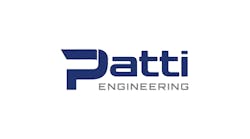By Sean Leonard, MBA Eng.OFF-LINE ANALYSIS of historical process data is an integral part of process optimization and production tracking. OPC helps maximize return on process history investments. OPC not only provides a standardized mechanism for collection of real time process data, it also enables multi-vendor historical analysis solutions. OPC facilitates highly scalable multi-vendor distributed historian architectures. OPC Data Access (DA) and OPC Historical Data Access (HDA) are two specifications that can be combined to solve many of the process history problems.Process Historian: The Heart of Process Optimization
Off-line analysis of historical process data is an integral part of process optimization and production tracking. To optimize processes, one needs to understand how the process is doing over time, not just what the value of the process variables are at a specific instant in time. Trending, process tuning, reporting, and environmental auditing all require access to historical process data. Industries use an application known as a process historian to store and retrieve historical process data. A process historian is a database-like application that is optimized for storing and accessing large amounts of time based data. Unlike a relational database, which is optimized for finding relationships between stored non-temporal data, a process historian is optimized for retrieving and storing series process data. Organizations that are serious about process optimization have a dedicated process historian as the foundation of an optimization strategy.Enterprise vs. Desktop Historians
Process historians come in different shapes and sizes. For large organizations there are enterprise class process historians. The enterprise process historian provides a robust solution for long-term storage of process data. These applications are optimized for multiple concurrent users accessing history, as well as for collecting hundreds of thousands of process variables. Typically the enterprise process historian stores interpreted (compressed) data. There are several common algorithms for deciding, in real time, what data is to be ignored during collection, and what data is to be stored. The typical enterprise process historian has a set of shared data analysis tools that are deployed via a web interface or installed on engineering workstations.Another form of process historian is the desktop class process historian. A desktop process historian provides localized data historization at the operation level. For example, seasonal unit performance metrics may be useful closer to the plant floor than the enterprise historian deployment. A desktop historian typically provides targeted history analysis (both long term and short term) on high-resolution uncompressed data. The focus of a desktop historian is on high-performance real-time data acquisition and storage. OPC Enables History Collection
OPC is an open standard that permits a consistent method of accessing field data from plant floor devices. OPC provides a set of specifications that are created by representatives from many vendors from around the world. This set of specifications enables inter-application communication for the purposes of process data transfer. The method of application communication using OPC standards remains the same regardless of the type and source of data. Therefore, end users are free to choose the software and hardware that meets their primary production needs, without having to consider the availability of proprietary drivers.The most popular specification is the OPC Data Access (DA) specification. The OPC DA specification provides a standard API (Application Program Interface) that is optimized for inter-application transfer of real time data. The OPC DA specification enables real-time data produced by hardware or software from vendor X to be easily transferred to hardware or software from vendor Y, thus enabling a true best of breed solution. Using OPC DA, multi-vendor distributed architecture solutions are deployed with ease.The OPC DA specification has simplified the historical data collection problem. Before OPC, historian vendors were required to build custom software for every type of data source. A historian is completely useless if it has no data to store, thus historian vendors spent a great deal of time building custom drivers to get data into their product. With the advent of OPC DA, historian vendors need only build an OPC DA connection, and instantly the historian can collect data from any of the hundreds of OPC DA enabled products. To an OPC DA enabled process historian, an OPC DA enabled product is just a generic source of data; the historian need not know any of the details regarding the proprietary data source. Historian vendors who provide OPC DA connectivity are now able to focus their development efforts on providing a better historian solution, instead of focusing on getting data into an existing technology.OPC HDA Standardizes Historical Data Access
The OPC Historical Data Access (HDA) specification provides a standard method for access to historical data. Similar to OPC DA, OPC HDA provides a standard mechanism for inter-application transfer of data. The fundamental difference between OPC HDA and OPC DA is that OPC HDA enabled applications share process data that is historical in nature. OPC HDA enabled applications that provide visualization, interpretation, and report generation can access data from any OPC HDA enabled process historian. Using OPC HDA, organizations that are interested in reaping the benefits of process optimization through off-line data analysis are free to choose the best of breed historian and the best of breed analysis packages.OPC HDA is a mature specification that has widespread use today. Every major brand of process historian has OPC HDA connectivity available today. If the vendor of the historian does not provide OPC HDA connectivity, third party vendors can provide standardized access to the process historian. Many applications exist that leverage the OPC HDA specification. OPC HDA enabled applications that do process optimization based upon historical data calculations can easily integrate with any existing OPC HDA enabled process historian.Several vendors provide OPC HDA enabled trending packages as well. OPC HDA is indeed a standard that has wide adoption.Although most organizations only have a single enterprise process historian, many organizations, either through asset acquisition or multi-site integration, are faced with multiple enterprise process historians. Before OPC HDA, an organization faced with multiple vendor historians were forced to make a choice between two vendors historians. Integration costs, the costs associated with data migration services, and the costs of training of personnel who were using the about to be displaced historian combine to make this a very expensive choice. OPC HDA enables multi-vendor historians to provide a distributed architecture that is, not only cost effective to implement, but leverages existing multi-vendor history assets. OPC HDA enabled products exist that enable data stored in a historian developed by vendor X to be transferred or shared with a historian from vendor Y. OPC HDA has effectively turned a problem of the past into an advantage for the future!OPC DA and OPC HDA history solution
Off-line analysis of historical process data is an integral part of process optimization and production tracking. To optimize processes, one needs to understand how the process is doing over time, not just what the value of the process variables are at a specific instant in time. Trending, process tuning, reporting, and environmental auditing all require access to historical process data. Industries use an application known as a process historian to store and retrieve historical process data. A process historian is a database-like application that is optimized for storing and accessing large amounts of time based data. Unlike a relational database, which is optimized for finding relationships between stored non-temporal data, a process historian is optimized for retrieving and storing series process data. Organizations that are serious about process optimization have a dedicated process historian as the foundation of an optimization strategy.Enterprise vs. Desktop Historians
Process historians come in different shapes and sizes. For large organizations there are enterprise class process historians. The enterprise process historian provides a robust solution for long-term storage of process data. These applications are optimized for multiple concurrent users accessing history, as well as for collecting hundreds of thousands of process variables. Typically the enterprise process historian stores interpreted (compressed) data. There are several common algorithms for deciding, in real time, what data is to be ignored during collection, and what data is to be stored. The typical enterprise process historian has a set of shared data analysis tools that are deployed via a web interface or installed on engineering workstations.Another form of process historian is the desktop class process historian. A desktop process historian provides localized data historization at the operation level. For example, seasonal unit performance metrics may be useful closer to the plant floor than the enterprise historian deployment. A desktop historian typically provides targeted history analysis (both long term and short term) on high-resolution uncompressed data. The focus of a desktop historian is on high-performance real-time data acquisition and storage. OPC Enables History Collection
OPC is an open standard that permits a consistent method of accessing field data from plant floor devices. OPC provides a set of specifications that are created by representatives from many vendors from around the world. This set of specifications enables inter-application communication for the purposes of process data transfer. The method of application communication using OPC standards remains the same regardless of the type and source of data. Therefore, end users are free to choose the software and hardware that meets their primary production needs, without having to consider the availability of proprietary drivers.The most popular specification is the OPC Data Access (DA) specification. The OPC DA specification provides a standard API (Application Program Interface) that is optimized for inter-application transfer of real time data. The OPC DA specification enables real-time data produced by hardware or software from vendor X to be easily transferred to hardware or software from vendor Y, thus enabling a true best of breed solution. Using OPC DA, multi-vendor distributed architecture solutions are deployed with ease.The OPC DA specification has simplified the historical data collection problem. Before OPC, historian vendors were required to build custom software for every type of data source. A historian is completely useless if it has no data to store, thus historian vendors spent a great deal of time building custom drivers to get data into their product. With the advent of OPC DA, historian vendors need only build an OPC DA connection, and instantly the historian can collect data from any of the hundreds of OPC DA enabled products. To an OPC DA enabled process historian, an OPC DA enabled product is just a generic source of data; the historian need not know any of the details regarding the proprietary data source. Historian vendors who provide OPC DA connectivity are now able to focus their development efforts on providing a better historian solution, instead of focusing on getting data into an existing technology.OPC HDA Standardizes Historical Data Access
The OPC Historical Data Access (HDA) specification provides a standard method for access to historical data. Similar to OPC DA, OPC HDA provides a standard mechanism for inter-application transfer of data. The fundamental difference between OPC HDA and OPC DA is that OPC HDA enabled applications share process data that is historical in nature. OPC HDA enabled applications that provide visualization, interpretation, and report generation can access data from any OPC HDA enabled process historian. Using OPC HDA, organizations that are interested in reaping the benefits of process optimization through off-line data analysis are free to choose the best of breed historian and the best of breed analysis packages.OPC HDA is a mature specification that has widespread use today. Every major brand of process historian has OPC HDA connectivity available today. If the vendor of the historian does not provide OPC HDA connectivity, third party vendors can provide standardized access to the process historian. Many applications exist that leverage the OPC HDA specification. OPC HDA enabled applications that do process optimization based upon historical data calculations can easily integrate with any existing OPC HDA enabled process historian.Several vendors provide OPC HDA enabled trending packages as well. OPC HDA is indeed a standard that has wide adoption.Although most organizations only have a single enterprise process historian, many organizations, either through asset acquisition or multi-site integration, are faced with multiple enterprise process historians. Before OPC HDA, an organization faced with multiple vendor historians were forced to make a choice between two vendors historians. Integration costs, the costs associated with data migration services, and the costs of training of personnel who were using the about to be displaced historian combine to make this a very expensive choice. OPC HDA enables multi-vendor historians to provide a distributed architecture that is, not only cost effective to implement, but leverages existing multi-vendor history assets. OPC HDA enabled products exist that enable data stored in a historian developed by vendor X to be transferred or shared with a historian from vendor Y. OPC HDA has effectively turned a problem of the past into an advantage for the future!OPC DA and OPC HDA history solution
(Click the Download Now button below to see a .pdf version of this graphic.)One can easily see how OPC DA has provided a process historian with a standardized mechanism for real-time data collection. OPC HDA can be leveraged to provide a standardized interface to the stored process history data. The combination provides a very useful combination for solving multi-vendor, best of breed architectures. OPC DA and OPC HDA can also be combined to solve the store and forward problem. Store and forward is a concept that is used by process historians to enable remote data collection for a process historian. During a connectivity break between the collector and the process historian, data is buffered on the remote location and forwarded to the process historian when the collector-historian link is restored.Distrubted OPC history architecture
(Click the Download Now button below to see a .pdf version of this graphic.)The problem with the proprietary collector problem is the lack of access to the buffered history data. Although data is constantly buffered at the remote location, the collectors provided by the historian vendors do not typically provide historian tool access to this buffer. Using an OPC HDA desktop class historian, data can not only be collected remotely using the OPC DA specification, the data can be transferred to the enterprise process historian using OPC HDA. This can either be done on a scheduled basis, or in the event of communication failure between the remote site and the enterprise process historian. Both of these solutions provide full time access to the historical data at the remote site, even if communication to the enterprise historian is not possible. Solutions like these mentioned leverage a powerful combination of OPC DA and OPC HDA connectivity.Conclusion
Off-line process history analysis using a process historian and a set of analysis tools has indeed proven to reduce costs and provide vital production tracking. OPC has provided a standardized solution to real-time data collection. Real time data sources are accessed using the OPC standard interface. Historian vendors no longer need to focus on data collection, or data visualization and presentation due to the widely adopted OPC HDA specification. Using OPC, organizations are free to choose, not only what vendor supplies the data analysis and presentation tools, they are also free to choose the vendor or vendors that supply the process historians for the organization. OPC HDA enables a true distributed historian solution.
Sean Leonard, B.Sc Eng. CompE, Msc (CompE), MBA (Technology Commercialization), is the OPC R&D Manager for Matrikon. He sits on the OPC Foundation's OPC DX (Data eXchange) Client Working Group and can be reached at[email protected].Click the Download Now button below to see a .pdf version of the graphics referenced in this article.
Off-line process history analysis using a process historian and a set of analysis tools has indeed proven to reduce costs and provide vital production tracking. OPC has provided a standardized solution to real-time data collection. Real time data sources are accessed using the OPC standard interface. Historian vendors no longer need to focus on data collection, or data visualization and presentation due to the widely adopted OPC HDA specification. Using OPC, organizations are free to choose, not only what vendor supplies the data analysis and presentation tools, they are also free to choose the vendor or vendors that supply the process historians for the organization. OPC HDA enables a true distributed historian solution.
| About the Author |



